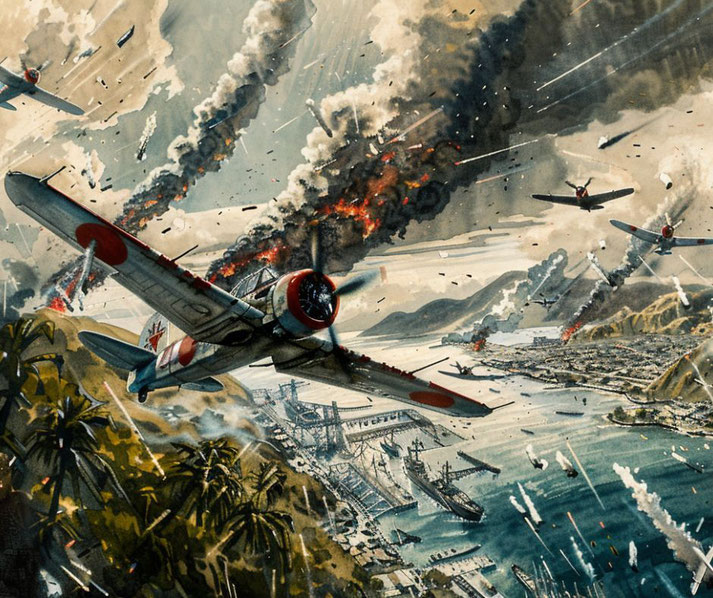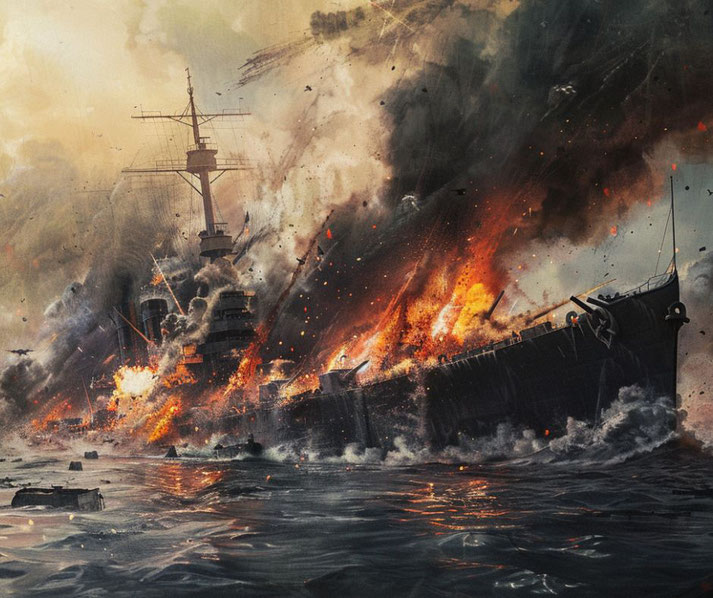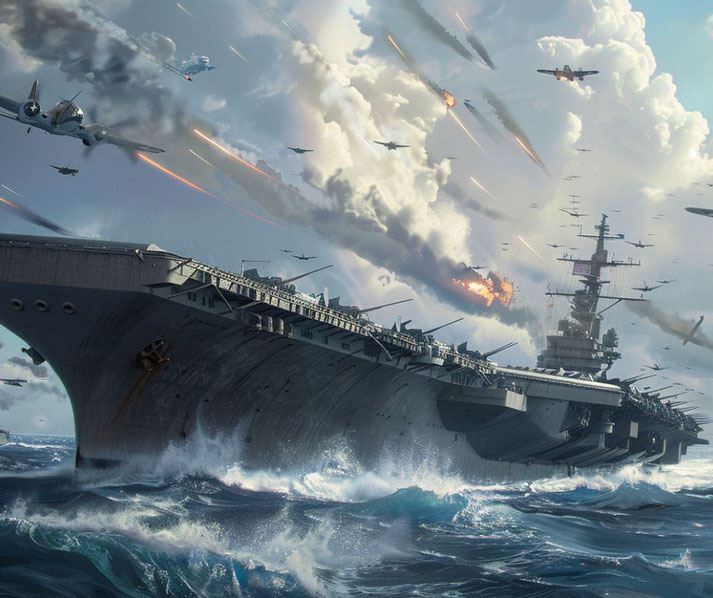Why did Japan attack Pearl Harbor in 1941?

On the morning of the 7th of December 1941, the Japanese Imperial Navy launched a surprise attack on Pearl Harbor, Oahu.
The attack was intended to cripple the United States Pacific Fleet and prevent them from interfering with Japan's plans for expansion in Southeast Asia.
The raid was devastating, resulting in the loss of over 2,400 American lives and the destruction of many warships and aircraft.
However, it would ultimately fail in its objective as America's rapid recovery and rearmament would spell the end of Japan's empire.
The causes of the attack on Pearl Harbor
In the years leading up to World War Two, Imperial Japan had sought to create a Greater East Asia Co-Prosperity Sphere through military expansion in Southeast Asia.
This was seen as a necessary step to reduce the overpopulation of Japan, and also provide resources such as rubber and oil, which were in short supply.
However, the aggressive nature of Japanese expansion during the 1930s, especially its brutal actions during the Second Sino-Japanese War led to America enforcing a trade embargo on Japan in 1941.
This embargo cut off the crucial resources that Japan needed to continue its war efforts, especially on oil and gasoline.
However, these resources could be accessed from various south-east Asian countries, if Japan could successfully invade and control them.
But by invading other countries in this way, Japan risked America attacking them in response.
As a result, the decision was made by the Japanese high command to launch a surprise attack on Pearl Harbor which would cripple America's ability to interfere in the region.
The decision to specifically target Pearl Harbor was the result of a long-standing plan by the Japanese military.
The overall architect of this plan was Admiral Isoroku Yamamoto, who believed that a direct strike on the American fleet could be successful.
He argued that if the enemy ships there were not destroyed, they would be used to blockade Japanese shipping routes.
This could stop food and resources reaching Japan and therefore result in starvation for his people.
Therefore, he was given the 'green light' to proceed with the attack. However, it needed to be kept an absolute secret if it was to be a success.
So, the United States were meant to believe that Japan was seeking a peaceful resolution to the embargo, even while the Japanese fleet was sailing towards Pearl Harbor.
In fact, Japan's diplomats were in Washington, negotiating with the United States and ostensibly seeking peace.
This deceptive tactic heightened the shock and betrayal felt by the American public and government.
What American forces were at Pearl Harbor?
The United States naval base at Pearl Harbor was a critical location for America because it was the main base of the US Pacific Fleet, which protected American interests and allies in Asia and the Pacific.
Among the nineteen US Navy ships that were at Pearl Harbor at the time of the attack, eight were battleships: USS Arizona, USS California, USS Maryland, USS Nevada, USS Oklahoma, USS Pennsylvania, USS Tennessee, and USS West Virginia.
There were also three aircraft carriers stationed at Pearl Harbor: the USS Enterprise, USS Lexington, and the USS Saratoga.
Prior to the attack, American cryptographers had made significant progress in breaking Japanese diplomatic codes, but they had not yet cracked the naval codes, which limited their ability to foresee the attack.
What happened during the attack on Pearl Harbor?
Yamamoto's plan involved sending successive waves of aircraft from the Japanese aircraft carriers to bomb as many American ships and aircraft as possible.
The attack itself would be carried out by six Japanese aircraft carriers and 353 planes: launched in four separate air groups.
Surprisingly, an early warning radar station on Oahu detected incoming Japanese planes, but the warning was mistakenly dismissed as an expected arrival of U.S. bombers from the mainland.
The first two wave of attack planes were sent to two different targets. The first went to the American airfields and military installations on Oahu, while the second attacked the Pacific Fleet anchored in Pearl Harbor.
The first wave of planes was led by Commander Mitsuo Fuchida, who had been trained in the United States and was, therefore, very familiar with the layout of Pearl Harbor.
As the Japanese had hoped, the surprise attack caught the Americans completely off-guard.
The majority of the U.S. forces completely unprepared, as they were still going about their morning routines.
The first shots were fired at 7:55 am local time on Sunday, December 7th, 1941.

Over the next hour of the attack, the American Pacific Fleet suffered significant damage.
The battleships West Virginia, California, and Tennessee were damaged or destroyed as well as many other smaller ships docked at Pearl Harbor.
The USS Oklahoma, another battleship at Pearl Harbor, was badly damaged and eventually capsized, resulting in the deaths of over 400 crew members.
The most devastating loss was the USS Arizona, which was sunk, killing 1,177 sailors and marines.
In addition, more than 180 U.S. aircraft were destroyed and another 159 were damaged.
Only 6 U.S. planes managed to get into the air to fight back.
In total, the Japanese attack resulted in over 2400 American casualties including civilians 68 civilians killed and 103 wounded during strafing runs on Oahu.
By 9:00 am almost all of the Japanese planes had returned safely to their carriers with only 29 being lost during the attack.

What the Japanese attack failed to achieve
However, the attack on Pearl Harbor was not a complete success for the Japanese.
One of the most crucial failures was the fact that the Japanese did not destroy a single American aircraft carrier.
This was because none of them were actually in the harbor at the time of the attack.
Instead, they were all out on various missions elsewhere: the USS Enterprise was returning from delivering aircraft to Wake Island, while the USS Lexington was delivering aircraft to Midway, and the USS Saratoga was undergoing refit in San Diego.
This was a lucky coincidence, not a deliberate strategy by the US commanders.
Ultimately, these aircraft carriers would eventually prove to be crucial in the subsequent war against Japan.
How America declared of war on Japan
The attack on Pearl Harbor had a tremendous impact on both Japan and the United States.
After the attack, Japanese Admiral Isoroku Yamamoto is reputed to have said, "I fear all we have done is to awaken a sleeping giant and fill him with a terrible resolve".
The attack on Pearl Harbor was met with outrage by the American people and government.
On December 8th, President Franklin D. Roosevelt addressed a joint session of Congress to declare war on Japan.
In his speech, Roosevelt referred to the attack as "a date which will live in infamy" and vowed that the United States would seek "vengeance in full measure."
The attack on Pearl Harbor not only led to the U.S. entering World War II, but it also prompted Nazi Germany and Italy to declare war on the United States on the 11th of December.
In the end, it now meant that Japan would fight a two-front war against America and China.

The consequences of the attack on Pearl Harbor
Despite the horrific loss of life and extensive damage, the US Pacific Fleet was able to recover quickly.
The United States' industrial power gave it the unique ability to rapidly repair and replace damaged ships.
Following the official declaration of war, many American businesses switched their production to support the war effort.
Within a year, the US was able to produce more ships at a faster speed than Japan could.
As a result, a new and expanded navy would ultimately inflict a catastrophic defeat on Japan at the Battle of Midway just six months later.
Ultimately, Yamamoto's plan had backfired and would lead directly to Japan's defeat in 1945.

What do you need help with?
Download ready-to-use digital learning resources
Copyright © History Skills 2014-2024.
Contact via email
With the exception of links to external sites, some historical sources and extracts from specific publications, all content on this website is copyrighted by History Skills. This content may not be copied, republished or redistributed without written permission from the website creator. Please use the Contact page to obtain relevant permission.





